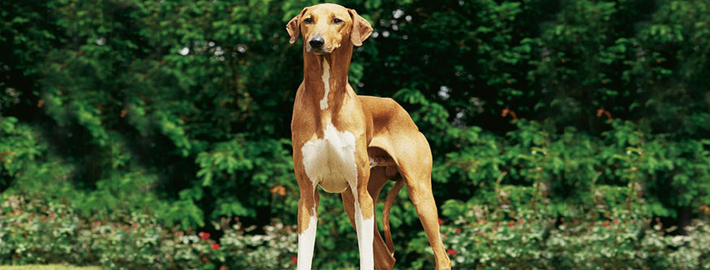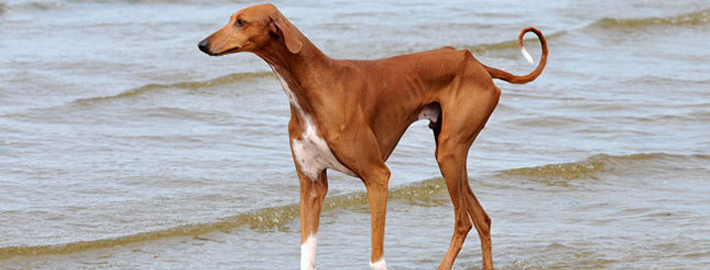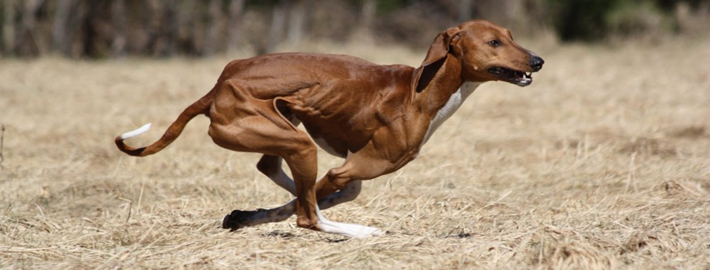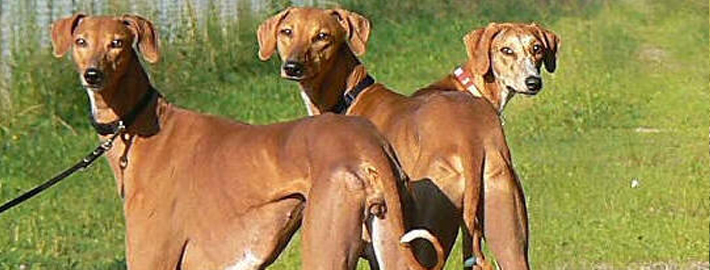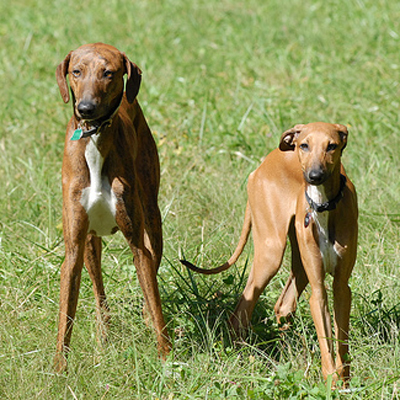What makes the Azawakh Unique?
A dog breed named for the Azawakh Valley in the Sahara desert where he originated, this is a lean and swift hunter with a regal presence. He’s proud but loyal, and protective of his home and family.
Breed Groups
Page Contents
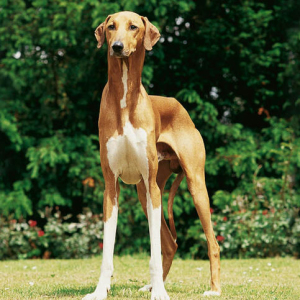
SnapShot
| Size: | Males – 61 to 74 cm (24 to 29 inches) Females – 58 to 74 cm (23 to 29 inches) |
| Weight: | Males – 15 to 25 (33 to 55 pounds) Females – 17 to 25 kg (37 to 55 pounds) |
| Origin: | Mali, Niger and Burkino Faso |
| Life Span: | 10 – 12 Years |
| Colour: | Dark Fawn, Clear Sand, Blue Fawn, Brindle, Grizzle, Black |
| Litter Size: | 4 to 6 puppies |
Is the Azawakh Right For You?
Although extremely loyal and deeply affectionate with its family, the Azawakh has the sharpest temperament of all the sighthound breeds. Azawakhs are fiercely protective of their people and territory. When properly introduced to strangers, the Azawakh’s initial reaction may range from accepting, indifferent or avoidant to friendly and affectionate. The Azawakh is extremely intelligent and possesses great independence, so training and socialization must start early. The Azawakh is a keen and willing companion that adapts easily to disciplines such as obedience, freestyle and agility training. As with all sighthounds, training for the breed should be positive and reward based. Harsh treatment or punishment based training will inevitably destroy the Azawakh spirit and cause mistrust, fear or aggression. This active dog has strong guarding and hunting instincts, and requires daily exercise for both mind and body fitness. The short coat needs minimal upkeep.
In 5 Words
- Refined
- Aloof
- Rugged
- Fierce
- Attentive
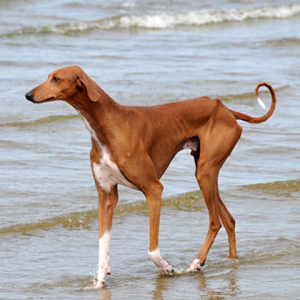
Characteristics
Learn About the Azawakh
Description
General Description
Particularly leggy and elegant, the Azawakh sighthound gives a general impression of great fineness. His bone structure and musculature is transparent beneath fine and lean tissues (skin). This sighthound presents itself as a rangy dog whose body fits into a rectangle with Its longer sides in vertical position. The Azawakh’s skin is fine, tight over the whole of the body. The hair is short, fine, down to none on the belly. Coat colors come in fawn with flecking limited to the extremities. All shades are admitted from light sable to dark fawn. The head may or may not have a black mask and the blaze is very inconsistent. The coat has a white bib and a white brush at the tip of the tail. Each of the four limbs must have compulsorily a white “stocking”, at least in shape of a trace on the feet. The black brindleing is admitted.
Short History of the Azawakh
The Azawakh has lived for thousands of years with the nomadic Tuareg Tribesmen, who probably migrated from the Sahel in the Southern region of the Sahara. The function of the Azawakh is that of a guard and a hunting dog. He will protect the camp from intruders and go hunting in a pack working with other Azawakhs in relays to bring down the prey. A versatile Hound that gives protection to his family and also supplies them with food.
The Azawakh covers a wide area lying in the Niger Basin which included the Azawakh valley. Niger, Burkina Faso and Mali.
Temperament
Unlike other sighthounds, the primary function of the Azawakh in its native land is that of protector. It develops an intense bond with his owner, yet can perform independently from its master. With those they accept, Azawakh are gentle and extremely affectionate. With strangers many are reserved and prefer not to be touched, but are not inherently aggressive. Although raised to protect livestock, they do not have innate aggression toward canine nor human unless they are threatened.
Azawakh have high energy and tremendous endurance. They are excellent training companions for runners and are nearly impervious to heat. They will happily run in weather over 100 degrees Fahrenheit that would kill a Greyhound. They often dig holes in the garden.
Many Azawakh dislike rain and cold weather.
Azawakh are pack oriented and form complex social hierarchies. They have tremendous memories and are able to recognize each other after long periods of separation. They can often be found sleeping on top of each other for warmth and companionship.
Caring for Your Azawakh
General Health
Azawakhs are an incredibly sound coursing hound. Serious coursing injuries are rare. The dogs heal very quickly from injury.
Azawakh have no known incidence of hip dysplasia. There is a small occurrence of adult-onset idiopathic epilepsy in the breed. Wobbler disease, or cervical vertebral instability, does rarely occur. Some breeders believe this is largely a developmental problem where puppies grow too quickly due to a high-protein Western diet.
Grooming & Bathing
A once-over with a hound glove should keep your Azawakh’s coat looking good. Regular shampooing isn’t necessary, but when you do give them a bath, use a mild, hypoallergenic shampoo as they tend to have sensitive skin.
Exercise & Training
The Azawakh will do okay in an apartment if they get enough exercise. They are relatively inactive indoors and a small yard will do. Azawakhs are sensitive to the cold but do well in cold climates as long as they wear a coat outside.

